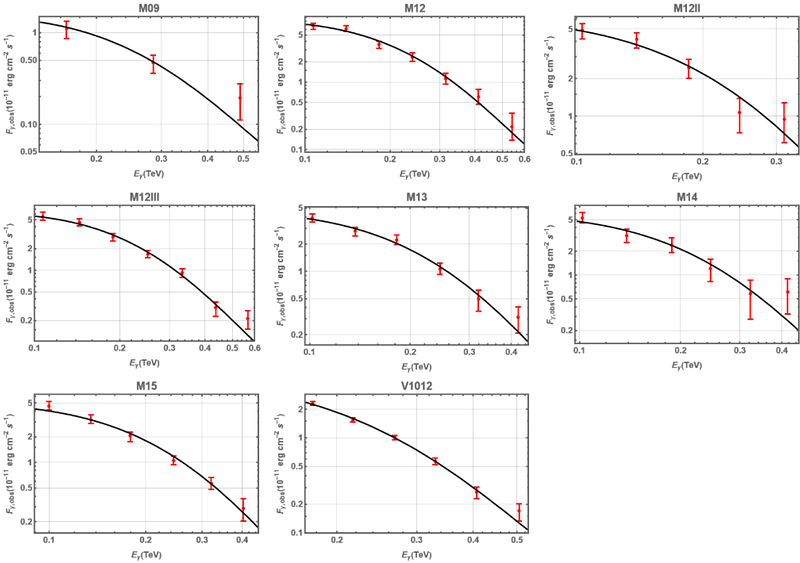Constraining the redshift of PG 1553+113 using the photohadronic model

Constraining the redshift of PG 1553+113 using the photohadronic model
Sarira Sahu, R. de J. Pacheco-Aké, G. Sánchez-Colón, D. I. Páez-Sánchez, A. U. Puga Oliveros, Subhash Rajpoot
AbstractBetween 2005 and 2015, the BL Lacertae object PG 1553+113 exhibited multiple very high-energy (VHE; > 100 GeV) gamma-ray flares, which were detected by the Cherenkov telescopes, High Energy Stereoscopic System (HESS), Major Atmospheric Gamma Imaging Cherenkov (MAGIC), and the Very Energetic Radiation Imaging Telescope Array System (VERITAS). Despite the uncertainty surrounding its redshift (z), various studies have sought to estimate this value. In this study, seventeen independently observed VHE gamma-ray spectra of PG 1553+113 are analyzed using four distinct extragalactic background light (EBL) models alongside the photohadronic framework. A global $\chi^2$ fit is applied to all observational data to determine the best-fitting redshift for each EBL model. Additionally, confidence level (CL) intervals for the redshift are calculated across all EBL models. The findings demonstrate that the photohadronic framework effectively describes all observed spectra. Among the EBL models, the lowest total $\chi^2$ value of 58.82 (with 58 degrees of freedom) was obtained using the model from Saldana-Lopez et al. (2021), while the highest value of 75.67 was associated with the model from Dominguez et al. (2011). The 95 per cent CL intervals for the statistical error of the redshift of PG 1553+113 are 0.500 < z < 0.537 for the Saldana-Lopez et al. (2021) model and 0.491 < z < 0.527 for the Dominguez et al. (2011) model. These results highlight the consistency of the photohadronic approach in interpreting the observed VHE gamma-ray spectra.